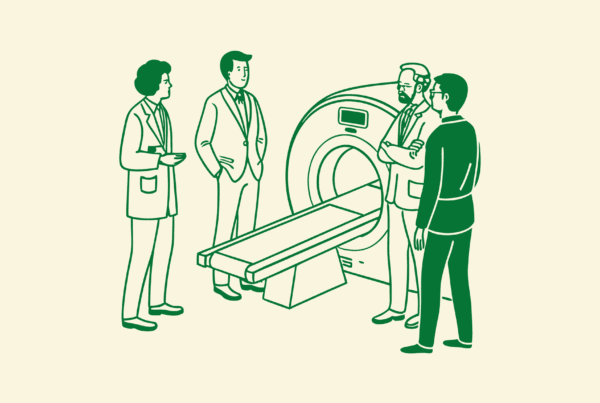Navigating the Market, Valuation, and Transition for Optimal Results
Selling your dental practice in South Dakota presents a unique set of circumstances. The market here is different. With a higher number of residents per dentist than the U.S. average, the demand for established practices is strong. Capitalizing on these favorable market dynamics requires a strategic approach. You need to understand your practice’s true value and the specific buyers looking for opportunities in the state. This guide will walk you through the key factors to consider.
Market Overview
The South Dakota dental market is less saturated than many other states. With roughly 200 general dental practices serving the entire population, the ratio of residents to dentists is significantly higher than the national average. This creates a built-in demand for patient care that is very attractive to potential buyers.
A look at the numbers shows a clear story.
| Market Metric | South Dakota | U.S. Average | Implication for Sellers |
|---|---|---|---|
| Residents per Dentist | 4,620 | 3,690 | Higher demand, less competition |
| Market Size | ~200 GP Practices | N/A | A smaller, tight-knit market |
This data suggests a strong foundation for a successful sale. However, local demographics, like a slightly lower median household income, also play a role. Understanding how to position your practice within this specific landscape is the first step toward maximizing your exit value.
Key Considerations
Beyond the market data, a successful sale hinges on careful preparation. Your financials need to be pristine, telling a clear story of profitability through metrics like Adjusted EBITDA, not just revenue. Many owners are surprised to learn how seemingly small “add-backs” can significantly increase their practice’s valuation. Furthermore, South Dakota has specific regulations regarding the corporate practice of dentistry. This can influence the type of buyer who can acquire your practice and how a deal must be structured. Planning for a smooth transition for your staff and patients is also critical. Neglecting these areas can create roadblocks during due diligence or decrease your final offer.
Market Activity
While specific transaction details in South Dakota are not often publicized, we see clear trends shaping the M&A landscape. Buyers are active, but they are looking for specific types of opportunities.
Rise of Strategic Buyers
An increasing number of small, growth-oriented dental groups and private equity-backed organizations are looking to enter or expand in markets like South Dakota. They are attracted by the stable patient base and reduced competition. These buyers look for well-managed practices with clean financials and a path for future growth. They often bring sophisticated operational support, but finding the right cultural fit is important.
The Succession Wave
Many independent dentists are approaching retirement, creating a high demand for turn-key practices. A younger dentist or a small group can acquire an established practice and step into a steady stream of patients and cash flow from day one. This makes practices with a loyal patient following and a solid team particularly valuable.
Sale Process
Selling your practice is a structured process, not a single event. A well-managed sale typically moves through four distinct phases. It begins with Preparation and Valuation, where you organize your financial records and determine a defensible market price for your practice. Next is Confidential Marketing, where your advisor identifies and vets qualified buyers without disrupting your day-to-day operations. Once interest is established, the Negotiation and Due Diligence phase begins. This is where offers are compared and the buyer scrutinizes every aspect of your practice. Finally, the process concludes with Closing and Transition. Each stage requires careful management to prevent delays and protect your interests.
Valuation
One of the most common mistakes owners make is valuing their practice with an overly simple formula, like a percentage of gross revenue. Sophisticated buyers do not think this way. They value practices based on cash flow. A professional valuation process is about finding and proving that cash flow.
- Establish Adjusted EBITDA. This is the starting point. We analyze your profit and loss statements to normalize for owner-specific expenses and one-time costs. This reveals the practice’s true underlying profitability.
- Apply a Market Multiple. This is not a fixed number. The multiple applied to your EBITDA depends on factors like your location, number of operatories, overhead efficiency, and reliance on a single provider.
- Frame the Narrative. Buyers purchase future opportunities. We help craft the story of your practice, highlighting its strengths and growth potential to justify a premium valuation.
This rigorous approach ensures you are not leaving money on the table.
Post-Sale Considerations
A successful transaction is not just about the sale price. It is also about what comes after. How your deal is structured has major tax implications that will determine your net proceeds. Planning this in advance is critical. You also need to define your own role post-sale. Will you leave immediately, or stay on for a period to ensure a smooth handover? Protecting your legacy also means ensuring your long-time staff and patients are taken care of under the new ownership. Thinking through these elements beforehand ensures your transition out of ownership is as successful as your time building the practice.
Frequently Asked Questions
What makes South Dakota’s dental market unique for sellers?
South Dakota’s dental market has a higher number of residents per dentist than the U.S. average, creating strong demand for established practices. The market is less saturated with roughly 200 general dental practices, which means less competition and a stable patient base attractive to buyers.
How is the value of a dental practice determined in South Dakota?
The value is primarily based on adjusted EBITDA (cash flow) rather than gross revenue alone. A professional valuation considers normalized profit and loss statements, applies a market multiple based on factors like location and operational efficiency, and frames a narrative around the practice’s growth potential to justify the price.
What types of buyers are most active in the South Dakota dental market?
There are two main buyer types: strategic buyers such as growth-oriented dental groups and private equity-backed firms looking for well-managed practices with growth opportunities, and younger dentists or small groups seeking turn-key practices with a loyal patient base as part of a succession plan.
What are key steps in the sale process of a South Dakota dental practice?
The sale process includes four phases: Preparation and Valuation, Confidential Marketing to vetted buyers, Negotiation and Due Diligence where offers are reviewed, and Closing and Transition which covers final agreements and ensuring smooth handover to protect interests and operations.
What post-sale considerations should sellers keep in mind when selling a dental practice in South Dakota?
Sellers should plan the deal structure carefully due to its tax implications, decide on their post-sale role (immediate exit or transition period), and ensure their staff and patients are cared for under new ownership to protect their legacy and ensure a successful ownership transition.



